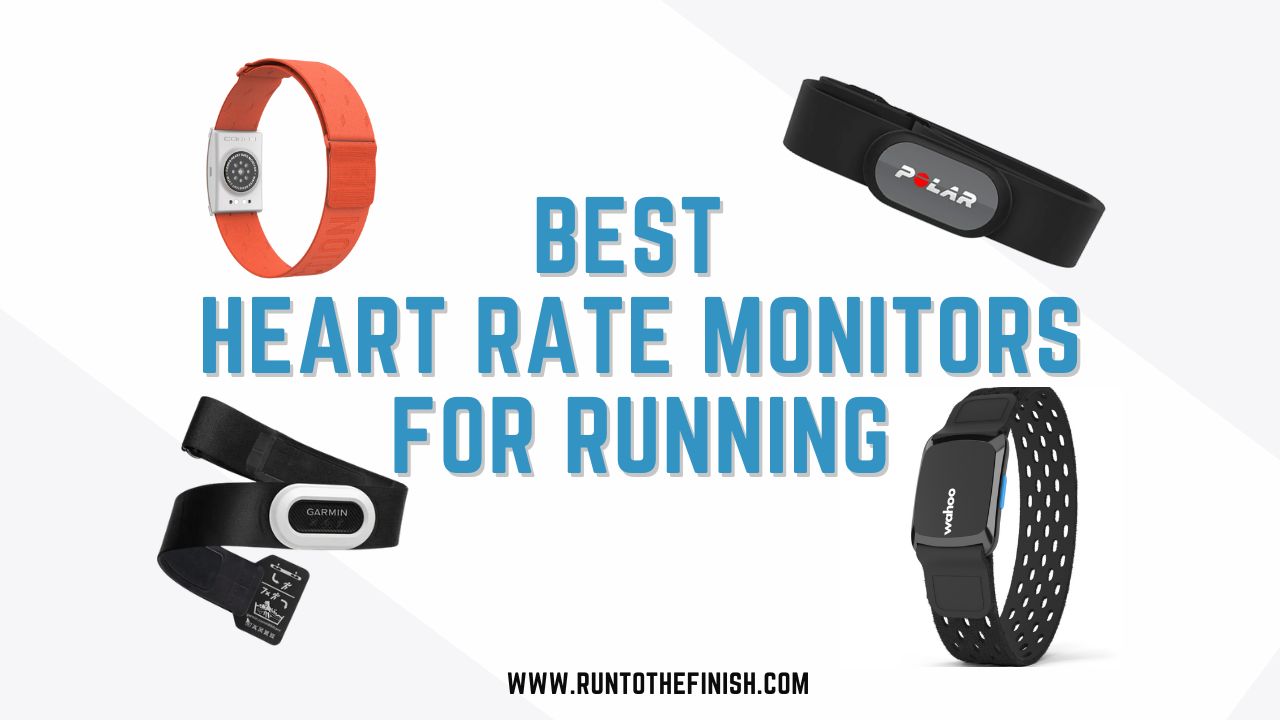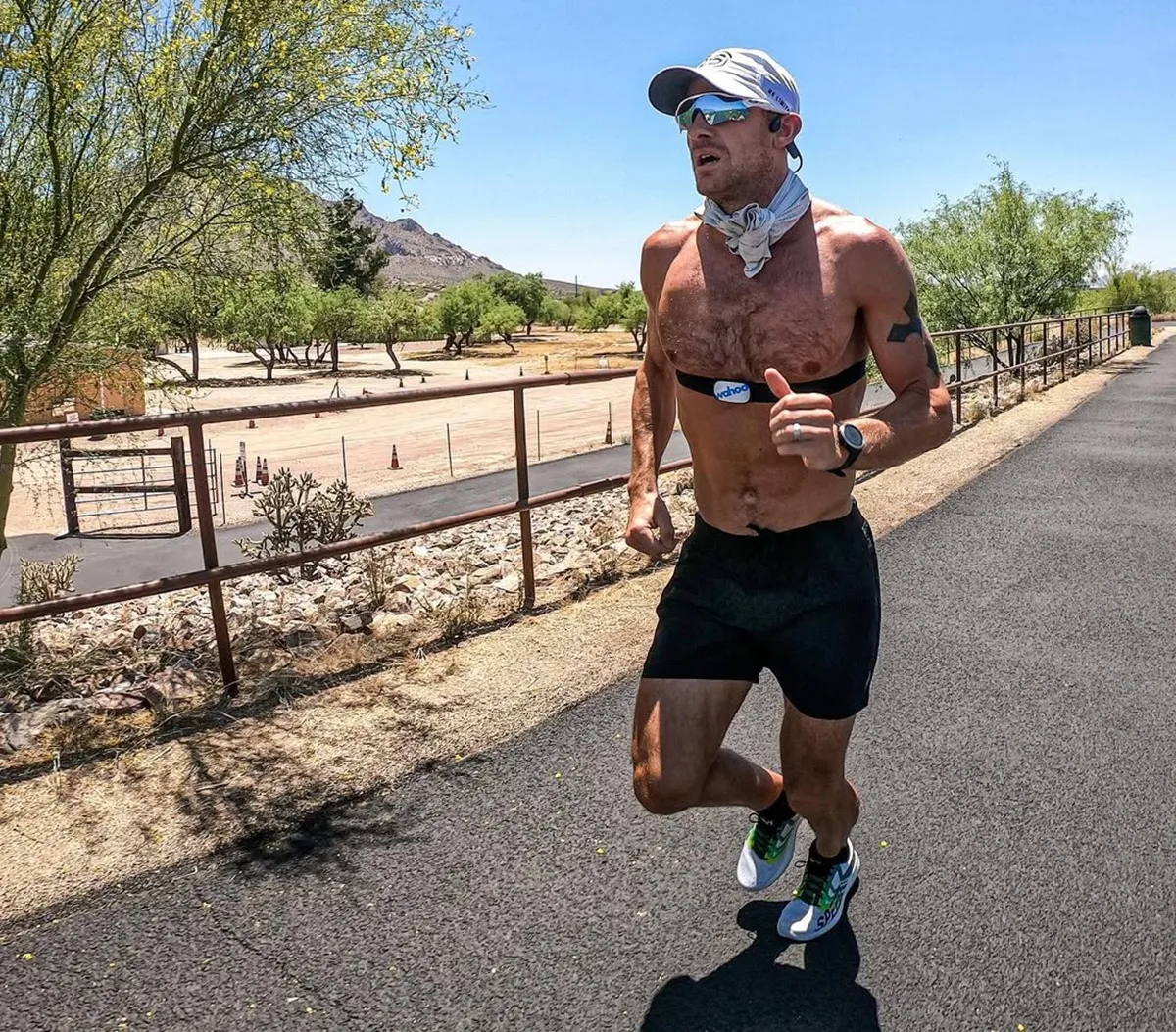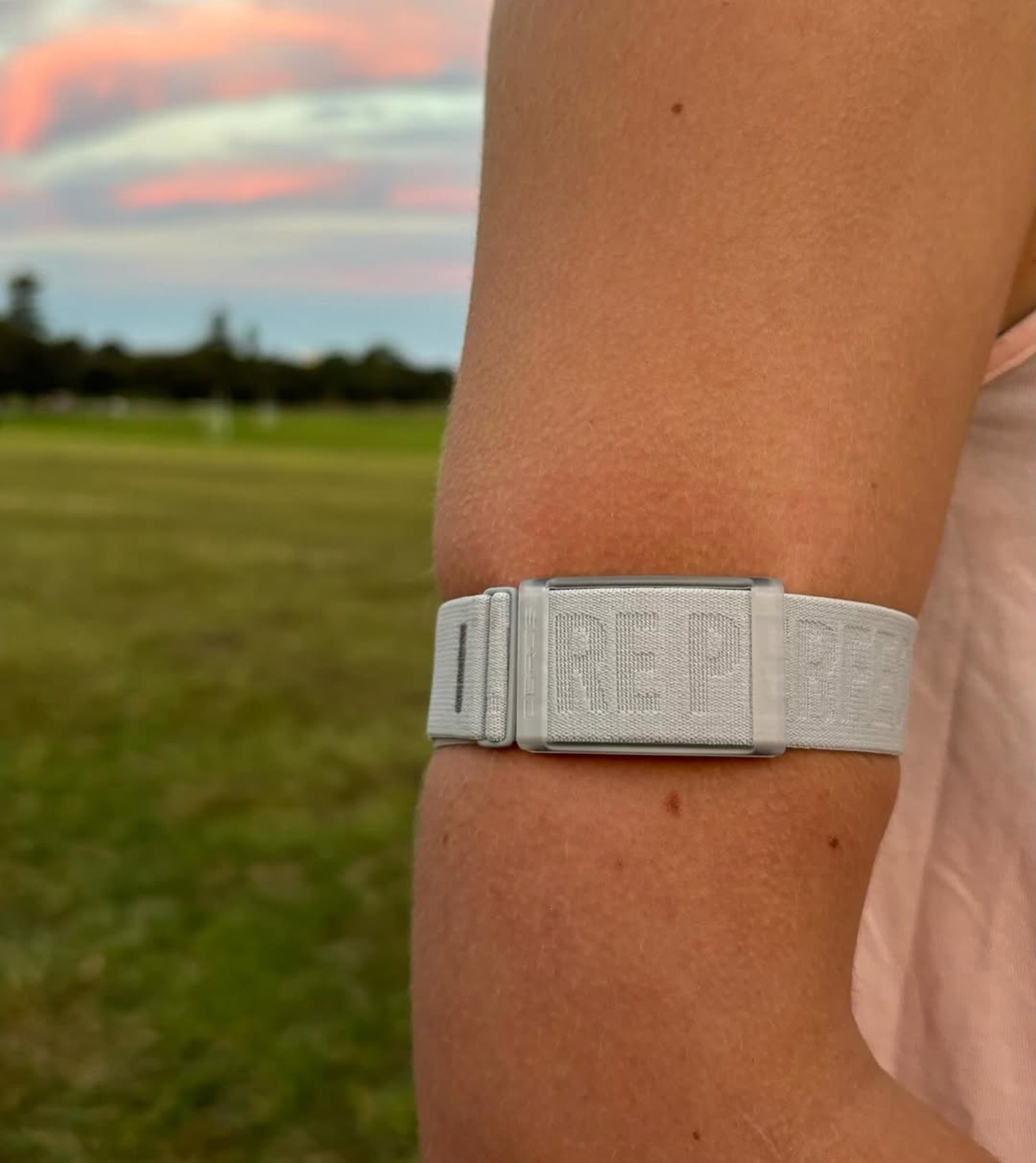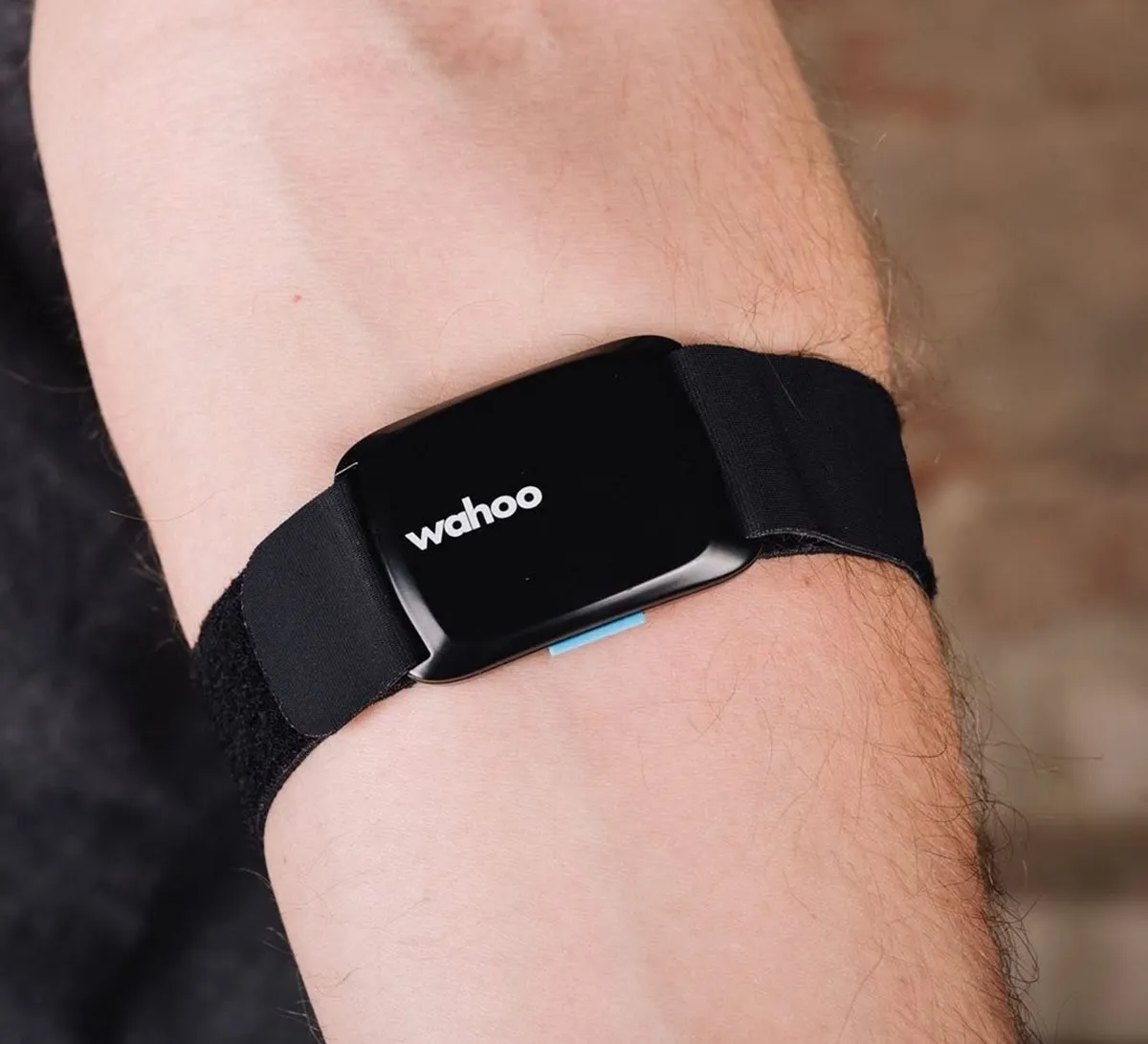Trying to figure out what the best heart rate monitor for running is can feel overwhelming. I’d say it depends on your goals, but right now the data shows that some versions are superior in accuracy. Let’s look at the best choices from watches to chest straps and more.

Heart-rate monitors are useful in a variety of situations. Tracking your heart rate is a good way for the average person who works out for health or fun to stay in touch with their cardiovascular system. For example, you can watch for irregular heartbeats or know your heart rate variability (HRV).
They’re also incredibly important gadgets that can help athletes and fitness enthusiasts such as runners and cyclists when training. For instance, when a runner is preparing for a race a HR monitor can help you improve your performance or change your goals.
So, if you’re training by heart rate with zones or doing low heart rate training, and you need the data to be 100% then this post is going to save you some heartache.
Regardless of which training method you’re incorporating you’ll find that it’s important to have accurate data when needed.
This article will focus on my personal recommendations based on decades of running experience and gear testing. I’ll give you options in the various categories of heart rate monitors that are available in the market.
What Options Are Available for Heart Rate Monitors?
You’ve probably heard of a few common options already, such as chest straps, armbands, multi-use fitness trackers such as the Apple Watch series etc. but you’ll be surprised to know just how many different types are available in the market today!
In this article we’ll take a look at what the options are, some of which might surprise you like earbuds!
And then talk about what plays in to accuracy and if your style of training could make certain tools better than others.
In the end, sometimes you may have to decide between ease of use and top of the line accuracy.
If you need some guidance on what to do with the heart rate data, checkout this Guide to Running Heart Rate Zones.
7 Best Heart Rate Monitors for Running
1. Polar H10
When it comes to chest straps, Polar makes some of the best in the market! I have personally used the Polar H10 and it’s an incredible monitor.
But if you want the newest and greatest, you can’t beat the Polar H10 as the overall best chest strap heart rate monitor on the market for runners.

It comes with enough built-in memory to store data from a single workout that you can then transfer to the compatible app, i.e., Polar Beat. It is also compatible with many other top fitness apps, so you have a wide variety to choose from.
If having two simultaneous Bluetooth connections is a priority for you, then pick the H10 over the H9. The other difference is that the H10 comes with in-built memory while the H9 does not. There’s also a slight difference between the straps for both of them.
- Type: chest strap
- Battery Life: 400h
- Sizing: XS-XXL
- Available for $96
Option 2: Polar H9
This is the most budget-friendly option from Polar, and we think it works just as well as the H10. It’s one we recommend often!
- Type: chest strap
- Battery Life: 400h
- Sizing: XS-XXL
- Available for $70
2. Garmin HRM-Pro
Some other popular options come from Garmin, such as the Garmin HRM-Pro. From experience I’ve found that Garmin chest straps always work well, but I’ve had better luck with getting my Polar chest strap to pair faster and hit the correct readings from the start of the workout.
It also has the ability to track a wide range of metrics beyond heart rate, including running dynamics, ground contact time, and vertical oscillation.

Garmin also offers a long battery life, with up to 1 year of use on a single coin cell battery. Additionally, the HRM-Pro is compatible with a range of Garmin devices, including cycling computers and GPS watches, as well as device is equipped with both ANT+ and Bluetooth connectivity.
It’s going to make tracking your HR in real time easy. And as always they are designing specifically for us athletes.
- Type: chest strap
- Battery Life: 1 year
- Sizing: one size
- Available for $108
3. Wahoo TRACKR
One of the standout features of the Wahoo TRACKR is its ease of use. The device is incredibly simple to set up and use, with a straightforward design that makes it easy to wear during even the most intense workouts.
The TRACKR connects to your smartphone or other device via Bluetooth, allowing you to track your heart rate in real-time and view your workout data in the accompanying app.

Comfort is also a key consideration when it comes to heart rate monitors, and the Wahoo Tickr delivers in this regard as well. The device features a soft, adjustable strap that is designed to be worn around the chest, providing a snug and comfortable fit that won’t interfere with your workout. I’ve heard this from many a runner friend.
Other key features of the Wahoo TRACKR include its ability to connect with a wide range of fitness apps and devices, including Apple Watch, Fitbit, and Garmin.
It also offers ANT+ compatibility, allowing you to connect with a range of cycling computers and other devices. Additionally, the Tickr features a long battery life, with up to 500 hours of use on a single charge, making it an ideal choice for those who want to track their heart rate throughout their fitness journey.
- Type: chest strap
- Battery Life: 200 hours
- Sizing: one size
- Available for $90
4. Polar OH1+
This isn’t a chest strap or a wrist based tool, instead it’s an optical sensor that you can wear around your arm or on your head if swimming.
Why? Well mostly based on the above idea I noted about eliminating the chafing and knowing this will work for swimming, as well by having a swimming goggles strap clip option and being water resistant up to 30m.
I started testing this during winter runs and I was really impressed. It stayed put and easily paired with my Garmin.

It has a USB charging adapter with a long battery life. They provide an adapter that implies you plug it in to your computer to charge, but I actually put it in the plug for my iPhone cord and that was way more convenient.
It has a built-in memory for up to 200 hours of training. You can then sync your workouts quite easily to Polar Flow via the Polar Beat app. It’s also compatible with other popular fitness apps on both iOS and Android, such as Strava and Nike.
- Type: arm band
- Battery Life: 400 hours
- Sizing: one size
- Available for $63
5. COROS Heart Rate Monitor
Another great option for a arm band heart monitor is from COROS. It is adjustable for size and sits comfortably on your upper arm.
The COROS heart rate monitor will pair with Bluetooth heart rate-enabled device, so you don’t have to have a COROS watch to use it.
It’s a snug fit but the arm band is so lightweight you will barely even notice that it’s there!

The heart rate monitor will automatically turn on and off when it senses it being worn. This way you won’t have to worry about syncing with any of your devices, and just go on with your workout.
You can connect up to 3 bluetooh devices at a time, so if you’re cross-training on an indoor trainer, that can be one of your options to make sure you’re staying on target with your training goals!
- Type: arm band
- Battery life: 30 hours
- Size: one size
- Available for $99
6. Wahoo TICKR Fit
The Wahoo TICKR Fit is worn on your forearm and comes with an adjustable strap so that you can customize the fit.
This would be a good option if you’re running, cycling or even swimming (hello triathletes!). It’s going to sync with third party apps like Wahoo Fitness, Strava and Runkeeper.
Connect this with the wahoo app on your phone and you’re able to see real time data during your workout

The TICKR Fit heart rate monitor uses Bluetooth and ANT+ to pair with your devices.
- Type: arm band
- Battery life: 30 hours
- Sizing: two adjustable straps included
- Available for $80
7. Jabra Elite Sport
Sport headphones now use optical heart rate trackers, which is great if you listen to music while you run because you can get an update on your HR too. They work using optical technology that senses your pulse with an LED.
Jabra Elite Sport is one of the best I’ve seen for this. They do a great job with fit and technology, plus they’re waterproof!
It has a pretty good battery life that delivery 4.5 hours of play time and comes with a portable charging case that gives you 13.5 hours of power to keep going.
You can track the heart rate data with the Jabra Sport Life app that integrates with these earbuds.
Obviously the downside is you’re still relying on an optical sensor and you probably aren’t going to wear them all day or for sleep, if you want continuous tracking.
In fact, some of you might remember when I tested out the Oakley Radar Pace. Not only does it tell you HR, but provides sunglasses and coaching.
- Type: earphones
- Battery: 13.5 hours with charged case
- Available for $86
What to Look for in a Heart Rate Monitor
Accuracy
You need a device that is accurate and consistently reliable if you’re monitoring your heart rate to ensure that you’re training within a certain range.
Most of the time, chest straps that use electrocardiography are the most reliable. The electrode pad on the chest strap gathers up electrical signals given off with each heartbeat, allowing for continuous heart-rate monitoring.
Optical heart rate monitors, which include bracelet and armband devices, track your pulse using tiny LED lights. It’s possible to get accurate readings with this method, but it requires a snug fit, and you can wind up with some readings that are way off some time to time.
**Honestly, this is the piece I’m always testing when doing gear reviews. I mentioned above there is only a short list of GPS watches that remain accurate mile after mile. Chest straps however will go the distance! I’ve had my H9 for like 10 years.
Comfort
Even the most comfortable chest straps can become restrictive and cause chafing during really long runs. Armbands and wristbands are typically more suitable for extended training sessions, particularly when the weather is warm.
Connectivity
Monitoring your progress, refining your workouts, and providing important information to a coach or healthcare professional are all possible thanks to the data provided by your heart rate monitor.
Look for a model that can have its data downloaded to a computer or synced to an app if you want to see your stats over time.
Some heart rate monitors use ANT+ technology, which is a wireless system used with workout machines like the Peloton. There are also options that use Bluetooth to connect to your phone wirelessly, which can make the gadget more convenient to use for some people.
Ease of Use and Compatibility
If a device is too complex to use, you will be unable to reap all of its benefits and features. Make sure the device fits your needs and works with the exercise equipment you’re using and the technology at some gyms.
How Do Heart Rate Monitors Work?
Electrocardiography is how most chest strap trackers measure the electrical activity of the heart. On the other hand, most armband and watch-style heart rate monitors use photoplethysmography. This uses small LED lights to measure blood flow through the skin.
You can see your heart rate in real-time with either method since the data is transmitted to a receiver, like a watch or an app.
How to Read Heart Rate Monitor Results
People who want to get the most out of their workouts use a heart rate monitor to make sure they stay in their target heart rate training zones.
Some basic monitors simply display your heart rate so it’s up to you to figure out your desired zone depending on your age and fitness level. Some of the more advanced devices will alert you with a notification when you reach your goal zone as well as when you fall below or go above it.
If you’re looking to calculate your target heart rate zones, check out my Guide to Running Heart Rate Zones.
Make sure you read part 1: Understanding how to train with heart rate!
Reading part 1 will give you a good foundation to understand heart rate data and explain to you the 5 heart rate zones that lie between your resting and max heart rates. This will enable you to gauge the level of intensity of your training on any given day.
If like me, maybe you’ve been doing Low Heart Rate training a long time and are really in tune with your body, you tend to know roughly how hard you’re working. And it’s ok with you to have days (i.e. in the cold) where the watch monitor isn’t spot on, but is possibly more convenient, well-read on as well!
Hopefully this breakdown of heart rate monitors for running, gave you some ideas to figure out what’s going to be most comfortable for you and help you track your training!
There’s so much to know about HR training, but if you’re concerned about running with a high heart rate a good monitor is key.
How Accurate are Wrist Heart Rate Monitors?
The two most common heart rate monitors include chest straps and optical heart rate sensors (usually on the wrist, but not always as you’ll see!!).
Optical monitors use sensors that detect the blood pulsing through your veins.
While more comfortable to wear, especially during a workout, they’re often not as accurate as chest straps. Particularly in cold weather running when your body is trying to pull blood towards the core and thus pulse might not be as strong.
- The blood flow in your wrist is further from the source: your heart.
- Further, poor reading can result if you flex your wrist or move your arm or travel down a bumpy road.
- Wrist-based monitors are more convenient and can be worn all day long without discomfort, but can show bpm discrepancies up to 6 beats.
- Some people notice a spike in the first mile of running. Doing a good warm up has eliminated that for me!
- Cadence Lock is a new thing I learned recently which explains why suddenly during your run the watch is showing 165-180 and you’re still going easy! It’s showing your cadence for a few seconds.
All right there you have it, a variety of options for measuring your HR while running! More gear you want to know about? Let me know.
Looking for heart rate training tips?
- What’s the Average Heart Rate While Running?
- Understanding Zone 2 HR Training
- When to Use Zone 4 HR Training
Other ways to connect with Amanda
Instagram Daily Fun: RunToTheFinish
Facebook Community Chatter: RunToTheFinish
Get more running tips: Pinterest




 8 Best Phone Holders for Running (6 Different Styles)
8 Best Phone Holders for Running (6 Different Styles)